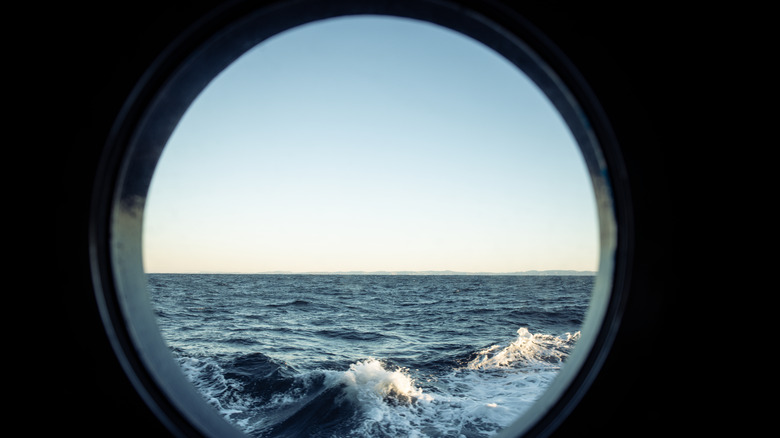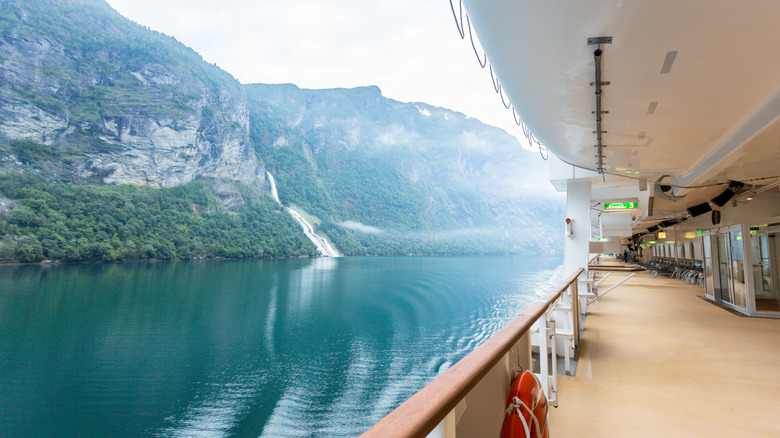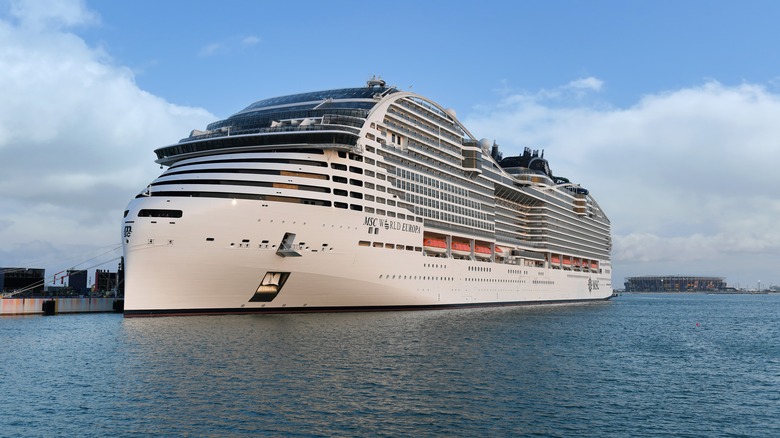Nervous About Rough Seas On Your Cruise? Here's How To Prepare Yourself
Taking a cruise is one of the most popular ways to travel and enjoy scenic ocean views and skylines. Cruises allow travelers to see several destinations in one trip, offer competitive rates, and can be done from Africa's west coast to the vibrant blue waters of Southeast Asia all the way down to Antarctica. Perhaps, the greatest perk involves travelers contributing minimal work and planning. But above all, cruises are typically family-friendly, making them a great option for travelers of varying ages.
With all that being said, there's still the elephant in the ship — what happens when the vessel is struck with rough seas? From anti-nausea tactics to positioning yourself correctly on the craft, tried-and-true resolutions are available, and we'll share them with you. These are worth considering because rough waters are a damper to any cruise getaway, and it's challenging to enjoy a vacation when you're nauseous and nervous.
Before you depart
If it looks like the weather will not be favorable for your cruise, don't panic and rush to cancel your trip. A cruise operator will assess the risks; they will know to withdraw if it's too dangerous to go out into the waters. Instead, you can take a few pre-trip actions to best prepare yourself should you face some unfavorable water conditions.
First, get plenty of rest before departing. You'll also want to pack anti-nausea and motion-sickness medicine — Dramamine has been said to be a lifesaver for many passengers who embark on the dreaded Drake Passage. It is one of the world's roughest waterways thanks to the converging of the Atlantic, Pacific, and Arctic Oceans and the most common way to get to Antarctica. But before purchasing any medication for your multi-day cruise, it's important to consult with your healthcare provider.
Wearing an acupressure wristband has also been known to positively affect seasickness. Without this small tool, one way to alleviate discomfort is by applying pressure to your wrist using your opposite thumb. You might also want to consider bringing ginger candies, as ginger is known to reduce nausea.
While on board
Even with all the precautions you can take before travel, you can still face discomfort onboard. One of the strongest factors to consider after departing, should the water get rough, is where you position yourself on the ship. The further in toward the center of the craft, the less likely you are to get sick. Avoid the edges of the vessel, as that's where the feeling of roughness will be strongest.
Drink plenty of water, avoid screens like phones and TV, and moderate your alcohol intake. While consuming anything on rough seas might be tough, hydration and a few bites of food can help with nausea. See if your cruise offers aromatherapy, as breathing in peppermint and lavender has been known to ease nausea and nerves.
Most importantly, listen to the captain's announcements and follow the crew's instructions. While staying calm in situations like this isn't easy, taking a few deep breaths and remembering to trust the staff and crew, trained professionals for this exact type of situation, can make handling them much easier. If the weather is unsafe, the captain will likely call to change your itinerary, so remember to be flexible and understand that your trip might be a little different than expected for safety purposes.


